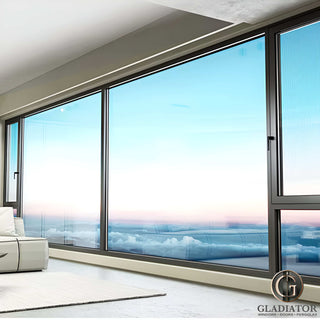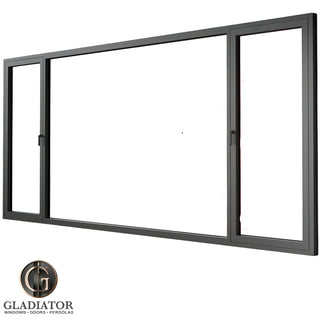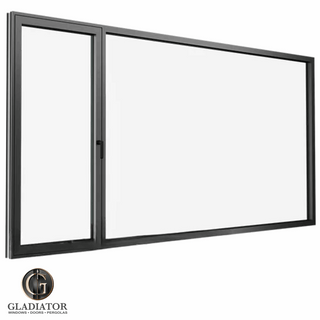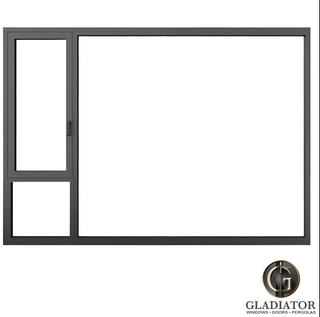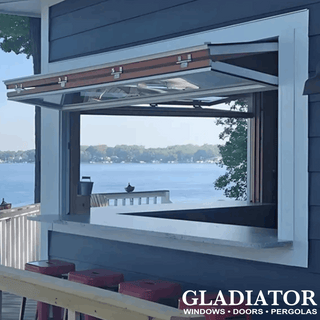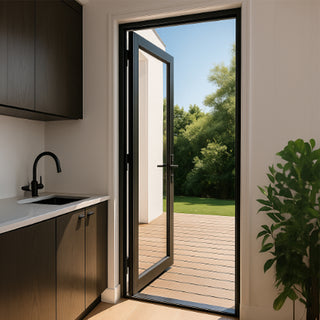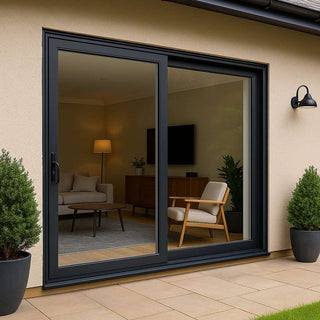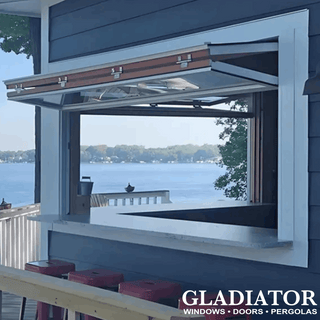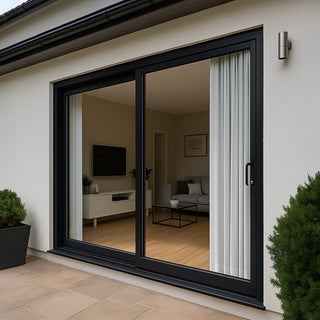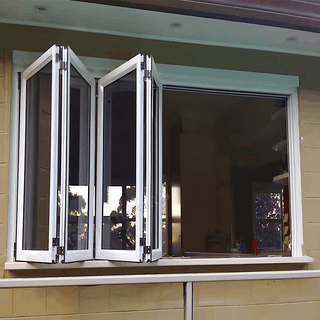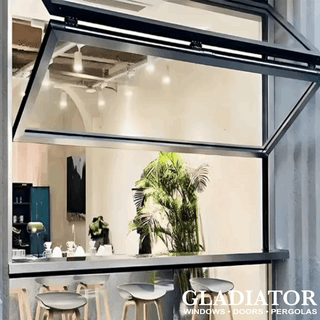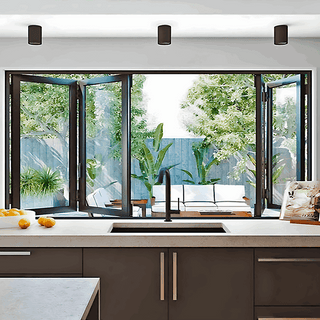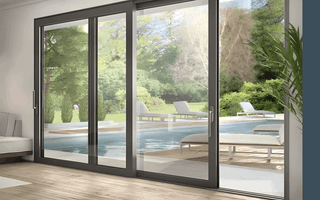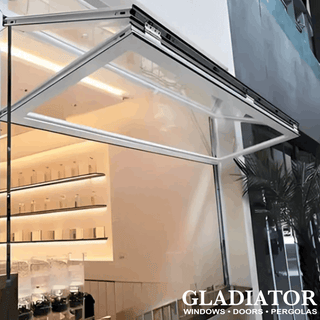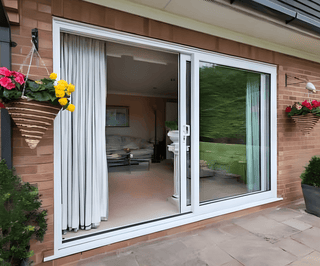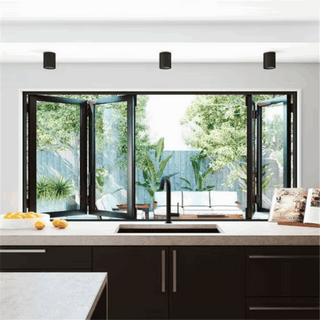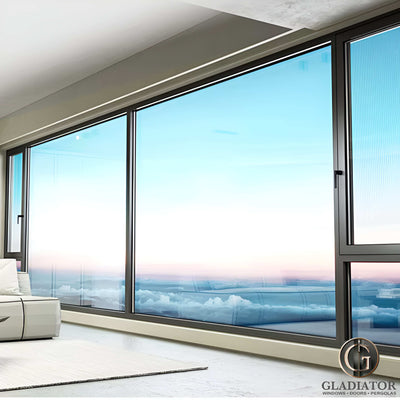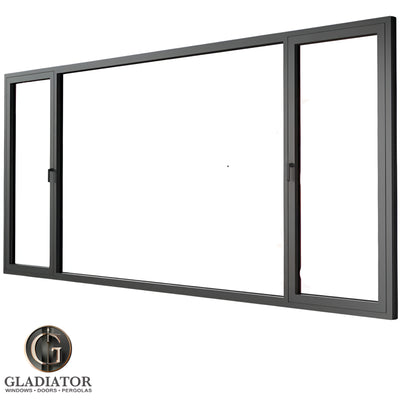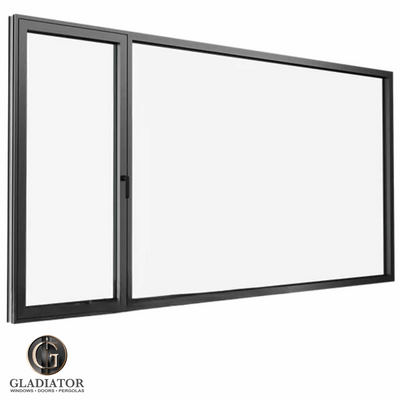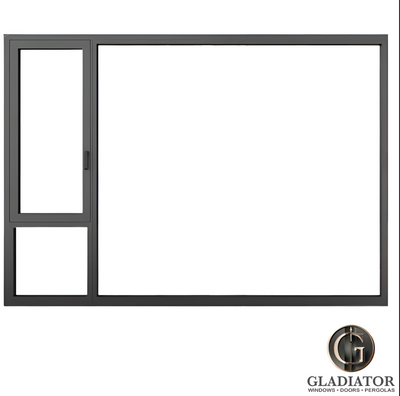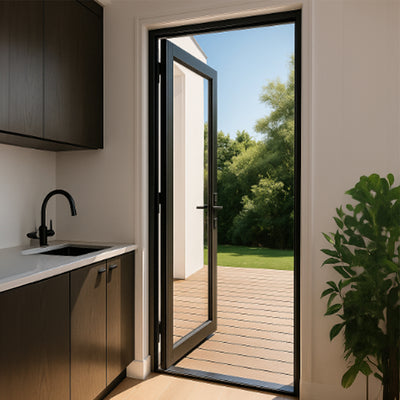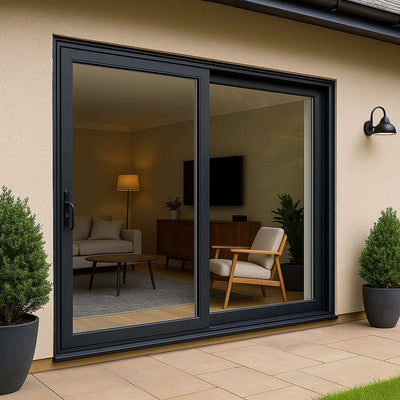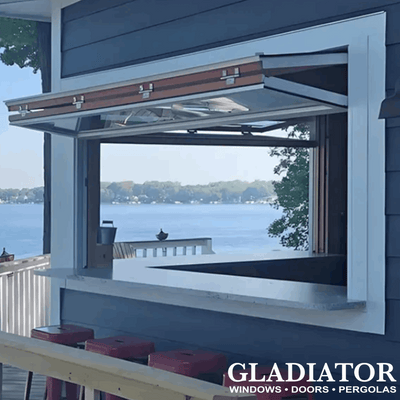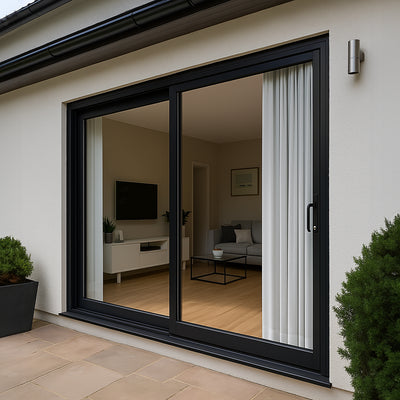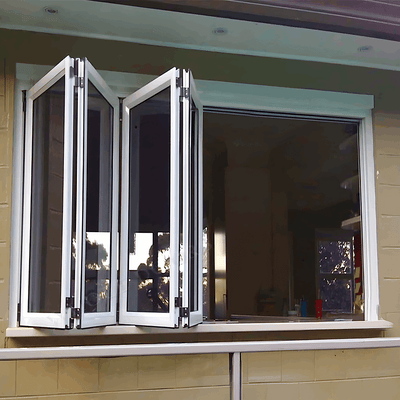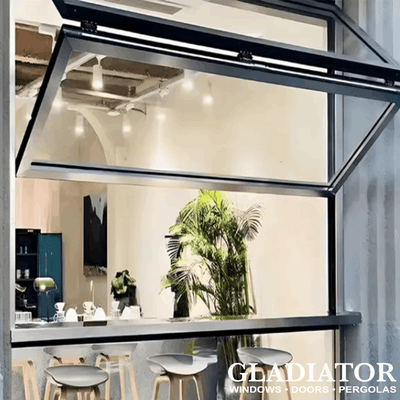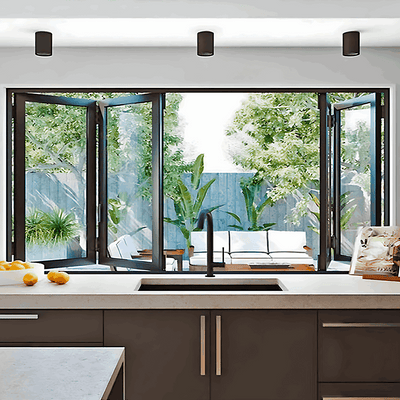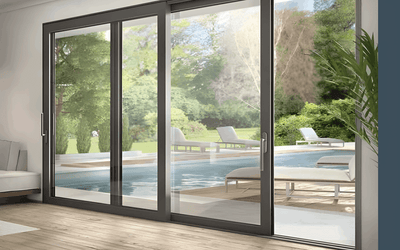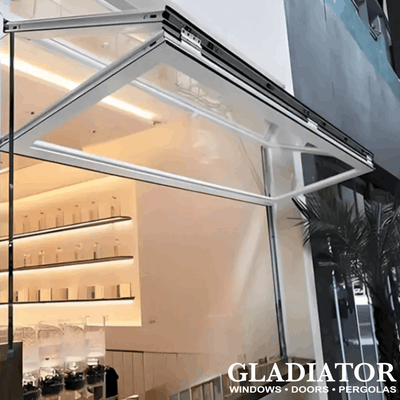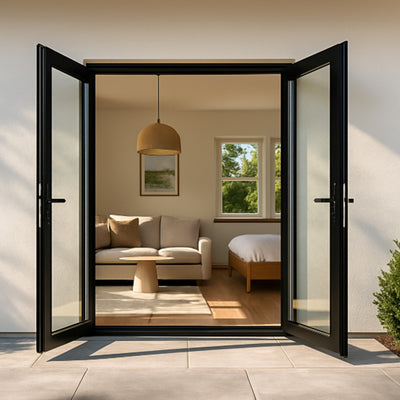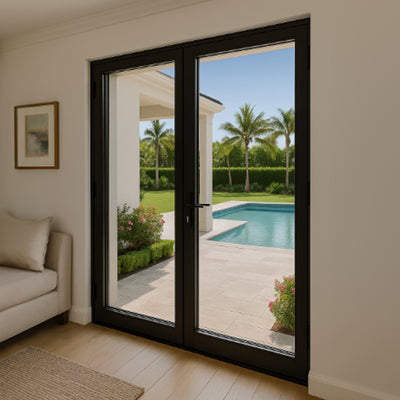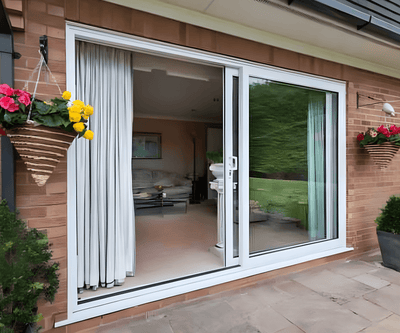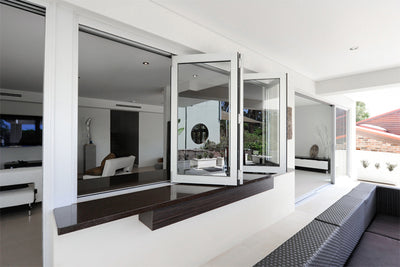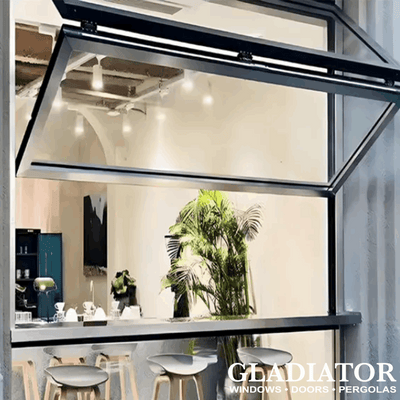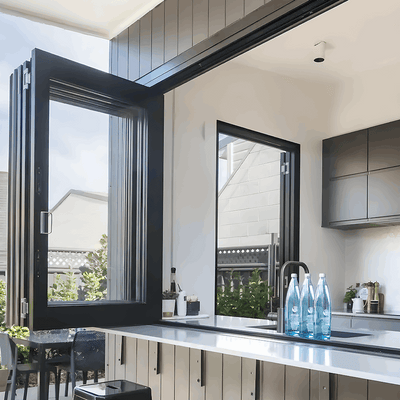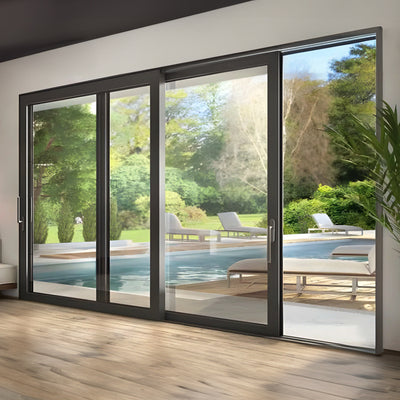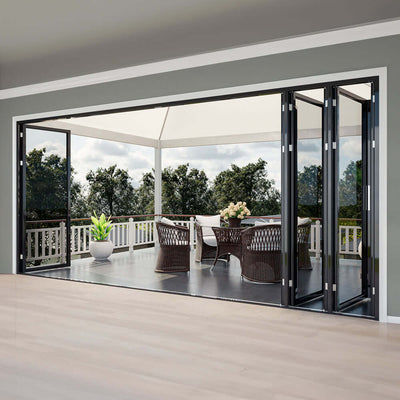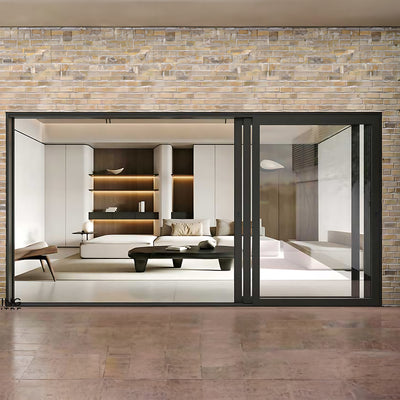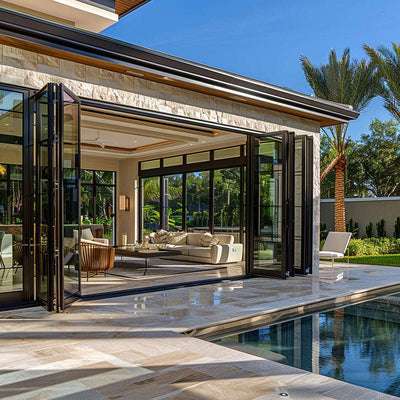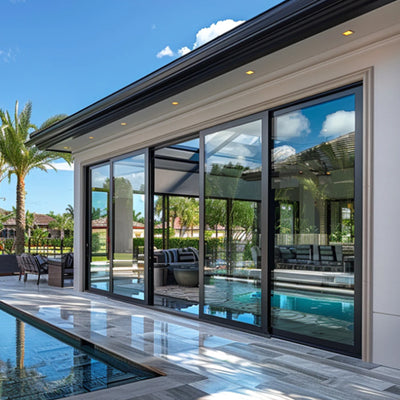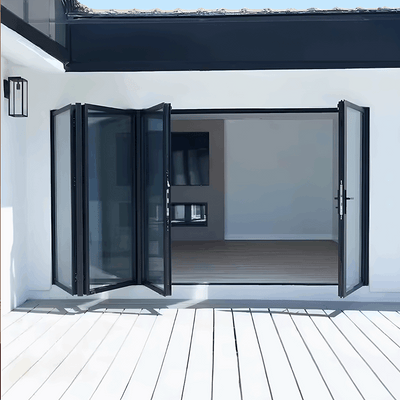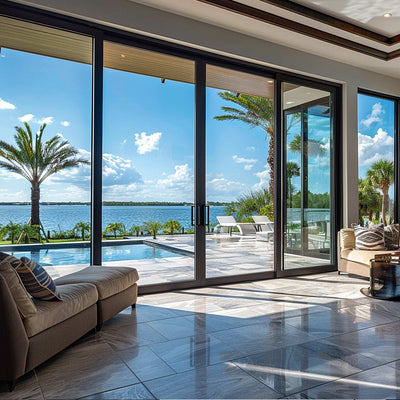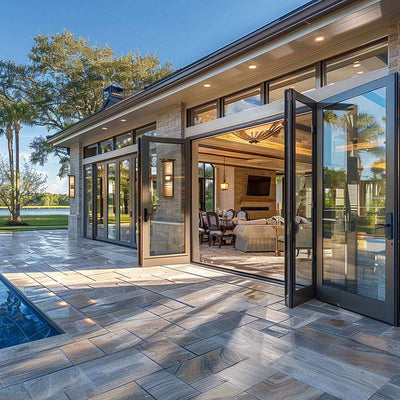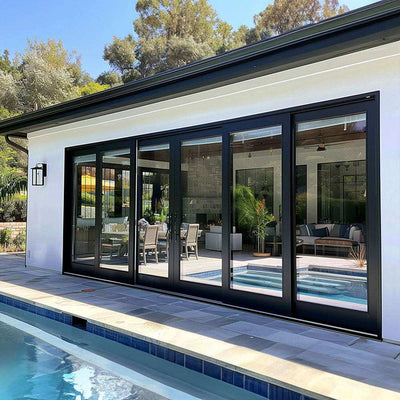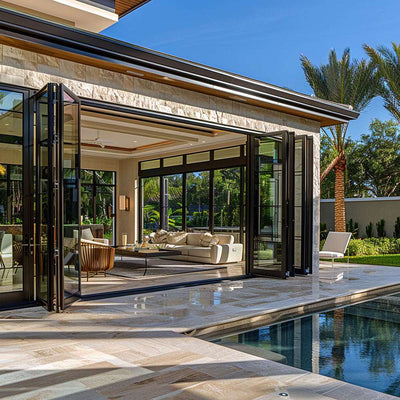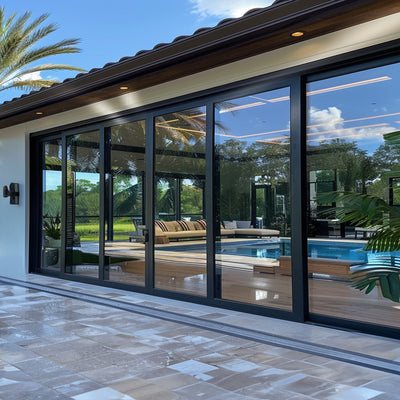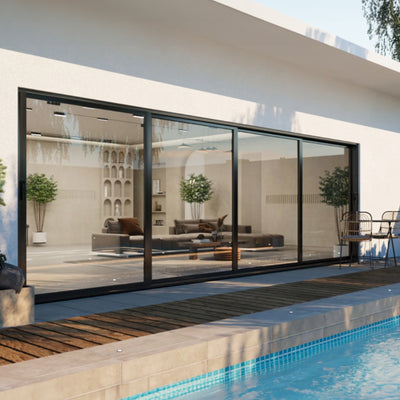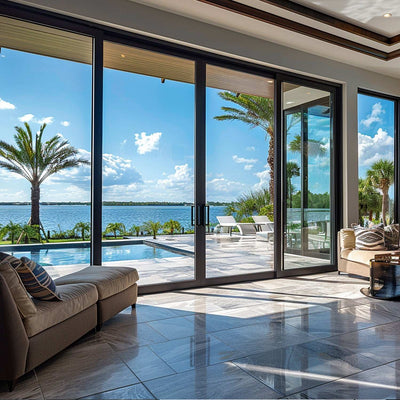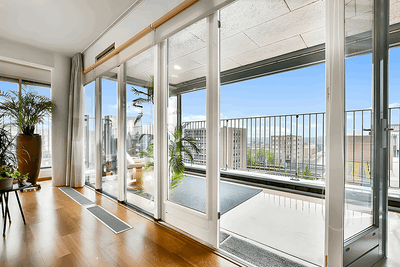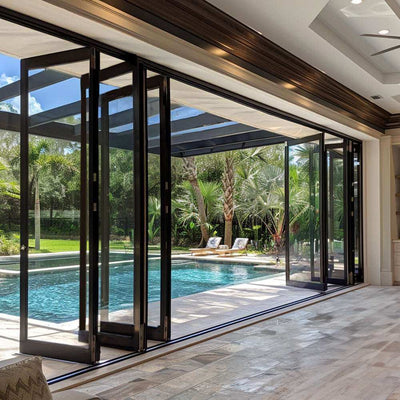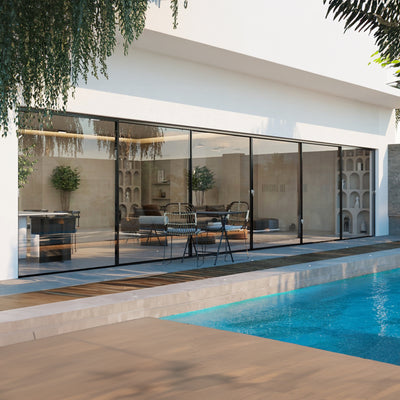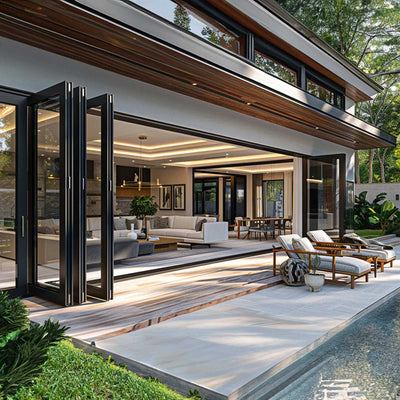The Real Cost Factors Behind Folding Patio Doors
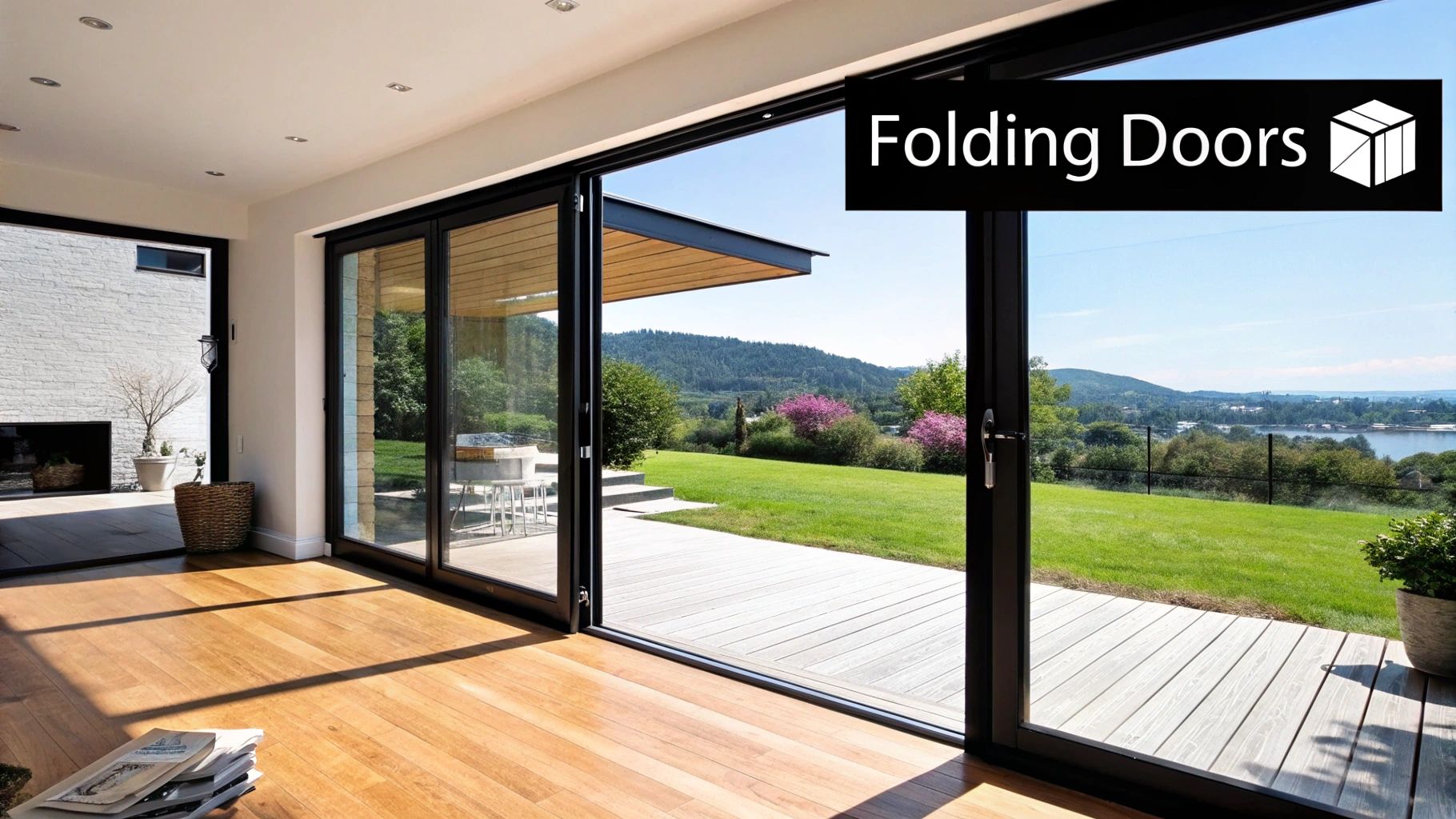
Understanding the cost of folding patio doors is essential for any homeowner. Several factors contribute to the final price. Knowing these elements helps you prioritize features and budget effectively. Breaking down each cost component provides a clearer understanding of your investment.
Material Selection and Cost Implications
The material you choose significantly impacts the overall cost. Popular options include vinyl, wood, and aluminum, each with its own advantages and price points. Vinyl is generally the most budget-friendly, offering good insulation and low maintenance. However, it may lack the durability of other options.
Wood provides a classic look and excellent insulation. It does, however, require regular maintenance to prevent weathering and rot. This can make wood a more demanding choice over time. Aluminum offers superior strength and durability, resisting rust and corrosion, but comes with a higher initial cost.
Sizing and Configuration: A Balancing Act
The size and configuration of your folding patio door system are crucial cost factors. Larger openings require more panels and hardware, increasing expenses. Custom sizes are generally more expensive than standard options. The number of panels, their height, and the opening's width all contribute to the final price.
A wider opening with numerous panels will naturally cost more than a smaller, simpler design. The average cost for a standard bifold patio door system varies widely. A basic 10-foot setup might start around $10,000, while luxury models can exceed $25,000. Aluminum bifold doors typically cost around $1,500 per linear foot, with installation adding another $25 per square foot. For a more in-depth look at aluminum door costs, check out this helpful resource: What Should Aluminum Folding and Sliding Doors Cost?
Glazing Options: Balancing Performance and Budget
Glazing plays a vital role in energy efficiency and noise reduction. Double-pane glass is a common choice, offering better insulation than single-pane. Triple-pane glass provides even greater energy efficiency but at an increased cost.
Low-E coatings further enhance insulation and reduce UV ray penetration, also adding to the price. Consider your climate and desired performance when choosing glazing. This helps balance cost and benefit.
Hardware and Accessories: The Finishing Touches
Hardware and accessories also contribute to the final cost. Handles, locks, and other hardware come in various styles and finishes, from basic to high-end. Features like integrated blinds or retractable screens add functionality but also increase expenses.
Carefully consider which hardware and accessory upgrades are necessary versus desirable. This helps manage your budget effectively.
Material Showdown: Finding Your Perfect Price-Performance Balance

When choosing folding patio doors, the material significantly impacts cost, longevity, and efficiency. Understanding the pros and cons of common materials like vinyl, aluminum, and wood empowers you to make the best decision for your home. This exploration will help you balance budget and needs.
Vinyl Folding Patio Doors: The Budget-Friendly Option
Vinyl is often the most affordable choice. It offers good insulation, requires little maintenance, and resists rot and insects. This makes it particularly attractive for budget-conscious homeowners.
However, vinyl might be less durable than other materials and not ideal for very large openings. For those seeking a practical balance of cost and performance, vinyl is a reliable option.
Aluminum Folding Patio Doors: The Durable Choice
Aluminum folding patio doors stand out for their strength and resistance to harsh weather. This makes them perfect for coastal regions or areas with extreme temperatures. The slim frames maximize glass area, flooding your space with natural light.
Aluminum is generally more expensive than vinyl. High-end aluminum doors with triple glazing improve thermal performance, making them a favorite among homeowners and developers. Top-quality bifold door systems can range from $1,600 to $2,000 per linear foot. Explore this topic further.
Wood Folding Patio Doors: The Classic Choice
Wood offers timeless beauty and excellent insulation. It creates a warm, inviting atmosphere. However, wood demands regular maintenance like painting or staining to protect it from weather and pests.
Wood is typically the most expensive material. Despite the higher cost and maintenance, wood remains a popular choice for homeowners who value natural aesthetics and superior insulation.
To help illustrate the differences between these materials, let’s look at a cost comparison table:
Folding Patio Door Materials Cost Comparison: A detailed breakdown of different door materials and their associated costs, benefits, and drawbacks.
| Material Type | Cost Per Linear Foot | Lifespan | Maintenance Level | Energy Efficiency |
|---|---|---|---|---|
| Vinyl | $500 - $800 | 20-30 years | Low | Good |
| Aluminum | $800 - $2,000+ | 30-50 years | Low | Excellent (with thermal breaks) |
| Wood | $1,000 - $2,500+ | 30+ years (with proper maintenance) | High | Excellent |
As this table shows, each material offers a different balance of cost and benefits. While vinyl is the most affordable, aluminum and wood offer greater durability and energy efficiency, albeit at a higher price point. Consider your long-term budget and desired maintenance level when making your choice.
You might be interested in: Our Products. Carefully consider your priorities—budget, durability, maintenance, and appearance—when choosing. Each material offers distinct advantages. Understanding these nuances allows you to confidently select the best material for your folding patio door project.
Size Matters: How Dimensions Impact Your Investment
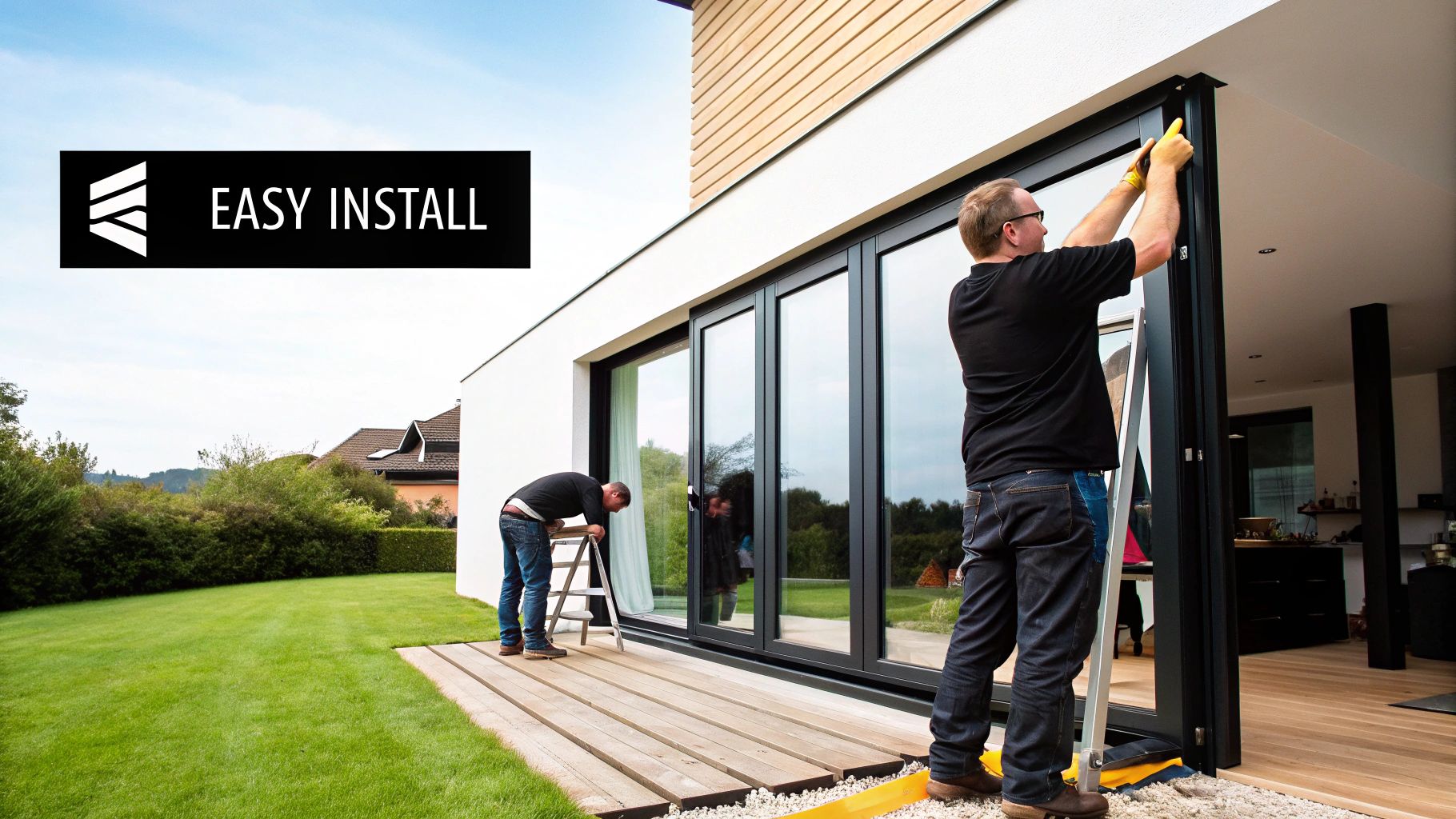
We've talked about how different materials affect folding patio door costs. Now, let's dive into the crucial role of size and configuration. These dimensions significantly influence material needs and installation complexity, directly impacting your overall budget.
Understanding the Impact of Width and Height
The most obvious factor is the opening width. Wider openings require more panels, which increases both material and hardware costs. Taller doors also need more material, adding to the expense. Therefore, a large, expansive opening will naturally cost more than a smaller one.
For example, a standard 8-foot wide opening might need four panels. A 16-foot opening would need double that – eight panels. This increase directly translates to higher costs for materials, hardware, and labor. Larger, heavier panels might also require more robust (and expensive) hardware for smooth operation.
Panel Count and Configuration: More Than Just Numbers
The number of panels isn't the only thing to consider. Their configuration also matters. A design with many narrow panels often costs more than one with fewer, wider panels because of the increased hardware and labor.
For example, an opening with eight narrow panels needs more hinges, rollers, and tracking hardware than an opening of the same width with just four wider panels. This added hardware complexity also means a more intricate installation, further affecting the final price.
To help illustrate the correlation between size, configuration, and cost, let's look at the table below:
Folding Patio Door Size and Cost Correlation This table shows how different door sizes and configurations affect total project cost.
| Door Width | Number of Panels | Average Material Cost | Estimated Installation Cost | Total Investment |
|---|---|---|---|---|
| 8 ft | 4 | $2,000 | $500 | $2,500 |
| 12 ft | 6 | $3,000 | $750 | $3,750 |
| 16 ft | 8 | $4,000 | $1,000 | $5,000 |
| 16 ft | 4 (Wider Panels) | $3,500 | $800 | $4,300 |
As you can see, the total investment increases with the number of panels, even when the door width remains the same. Opting for fewer, wider panels can offer some savings.
Standard vs. Custom Sizes: Balancing Cost and Vision
Standard-sized doors are usually more budget-friendly than custom sizes. Manufacturers produce standard sizes in bulk, leading to economies of scale. Custom sizes require specialized manufacturing, which increases costs.
While custom sizing offers design flexibility, it's wise to check out standard sizes first. You might find one that fits your needs without the extra cost of customization. This lets you allocate your budget to other features like premium hardware or energy-efficient glazing.
Planning for Success: Sizing Strategies for Smart Budgeting
To accurately estimate your folding patio door cost, consider the combined impact of width, height, and panel configuration. Strategic thinking about these dimensions can save you money without compromising your design. Learn more in our article about Sitemaps.
For example, if budget is a concern, think about slightly reducing the opening width or choosing fewer, wider panels. Even small adjustments can make a difference in the total cost. By understanding these factors, you can make informed decisions and create a realistic budget for your project.
Installation Costs: The Often Underestimated Budget Item
Folding patio doors represent a significant investment, and it's easy to focus solely on the initial price. However, installation is a crucial part of the project and can significantly impact your overall budget. Failing to accurately estimate installation costs can lead to unexpected expenses and potential long-term problems. Let's explore the key factors that influence installation costs, from labor rates to finishing touches.
Factors Influencing Installation Complexity and Cost
Several factors can affect the complexity and cost of installing folding patio doors. Wall composition is a major consideration. Installing these doors in a solid brick wall is typically more labor-intensive than in a standard wood-framed wall. Brick requires specialized cutting and reinforcement, increasing labor time and cost.
Access challenges also play a role. Difficult-to-reach installation sites may require specialized equipment, like scaffolding for a second-story installation, or extra manpower. This adds to the overall expense compared to a readily accessible ground-floor installation. These access considerations can significantly affect your final budget.
The rising popularity of these doors is reflected in the growth of the global bifold doors market. Valued at approximately $9.77 billion in 2016, the market is projected to reach about $13.93 billion by 2023. This represents a 5.2% CAGR from 2017 to 2023, highlighting the increasing demand for energy-efficient door options. Find more detailed statistics here.
Recognizing Quality Installation Quotes
A crucial step in the process is evaluating installation quotes. A thorough quote should provide a detailed breakdown of all anticipated expenses.
- Labor Costs: The quote should clearly state the hourly labor rate and the estimated installation time.
- Material Costs: All necessary materials, including framing, sealants, and hardware, should be itemized.
- Permits and Inspections: Any required permits and inspection fees should be included in the quote.
- Warranty: A reputable installer will provide a warranty covering their workmanship.
Vague or incomplete quotes should be a cause for concern. Extremely low bids can also be a red flag, potentially indicating subpar workmanship or hidden costs that could emerge later. You might be interested in: Our Collections.
Professional Installation: Ensuring Optimal Performance and Warranty Protection
While some homeowners with DIY experience might consider installing folding patio doors themselves, professional installation is often essential, especially for warranty purposes. Most manufacturers require professional installation to maintain the validity of their warranties.
Professional installers have the expertise and specialized tools to ensure correct installation, effective weather sealing, and optimal door performance. This expertise minimizes the risk of problems like air leaks, drafts, and operational issues that can result from improper installation. Investing in professional installation protects your investment and ensures long-term satisfaction with your new folding patio doors.
Beyond Purchase Price: The True Value Proposition
While the initial cost of folding patio doors is a major consideration, smart homeowners know that the real benefits extend beyond the sticker price. A long-term perspective reveals how energy efficiency, improved comfort, and increased home value all contribute to a wise investment.
Energy Efficiency: Transforming Costs Over Time
Energy-efficient folding patio doors can significantly lower your utility bills. Features like high-performance glass, thermal breaks, and tight seals minimize heat transfer. This helps keep your home cooler during summer and warmer in the winter, leading to lower heating and cooling expenses throughout the doors' lifespan.
For instance, upgrading from single-pane to double-pane glass with a Low-E coating can drastically improve insulation. While this upgrade might have a higher initial cost, the energy savings over time can offset the difference and ultimately result in significant savings. Thermal breaks in aluminum frames also play a crucial role. They prevent the frame itself from conducting heat, further improving energy efficiency.
Comfort and Sustainability: Added Benefits Beyond Savings
Beyond the financial advantages, energy-efficient folding patio doors enhance your home's comfort and contribute to a more sustainable lifestyle. The improved insulation leads to more consistent indoor temperatures and reduces drafts and cold spots. This creates a more pleasant living environment and minimizes your dependence on energy-consuming heating and cooling systems.
By reducing your energy use, you also lessen your environmental impact. This aligns with growing eco-conscious values and contributes to a more sustainable way of living. These non-monetary benefits add substantial value to your initial investment.
Property Value: A Smart Investment for the Future
Folding patio doors, particularly high-quality, energy-efficient models, can increase your property's market value. They enhance your home's visual appeal and create a seamless flow between indoor and outdoor spaces. This attractive feature is often a key selling point for prospective buyers.
Moreover, energy-efficient features are increasingly desirable in real estate. Buyers understand the long-term value of lower energy bills and a reduced carbon footprint. This can make your property more appealing and potentially boost its resale price.
Calculating Your Return on Investment
To fully understand the value of investing in folding patio doors, consider the following:
- Energy Ratings: Look for doors with high U-values and Solar Heat Gain Coefficients (SHGC). These ratings quantify how effectively the doors insulate and prevent heat gain.
- Payback Period: Estimate how long it will take for energy savings to compensate for the initial upgrade cost.
- Tax Incentives and Rebates: Research potential tax credits or rebates for energy-efficient home improvements. These can substantially lower your upfront expenses and shorten the payback period.
By analyzing these factors, you can accurately assess the long-term return on your investment in folding patio doors. This ensures a well-informed decision that enhances your home's comfort, value, and sustainability. Read also: Our Blog. This comprehensive approach helps you look beyond the initial price and recognize the true benefits of choosing high-quality, energy-efficient folding patio doors.
Navigating Quotes Like a Pro: Getting True Apples-to-Apples Comparisons
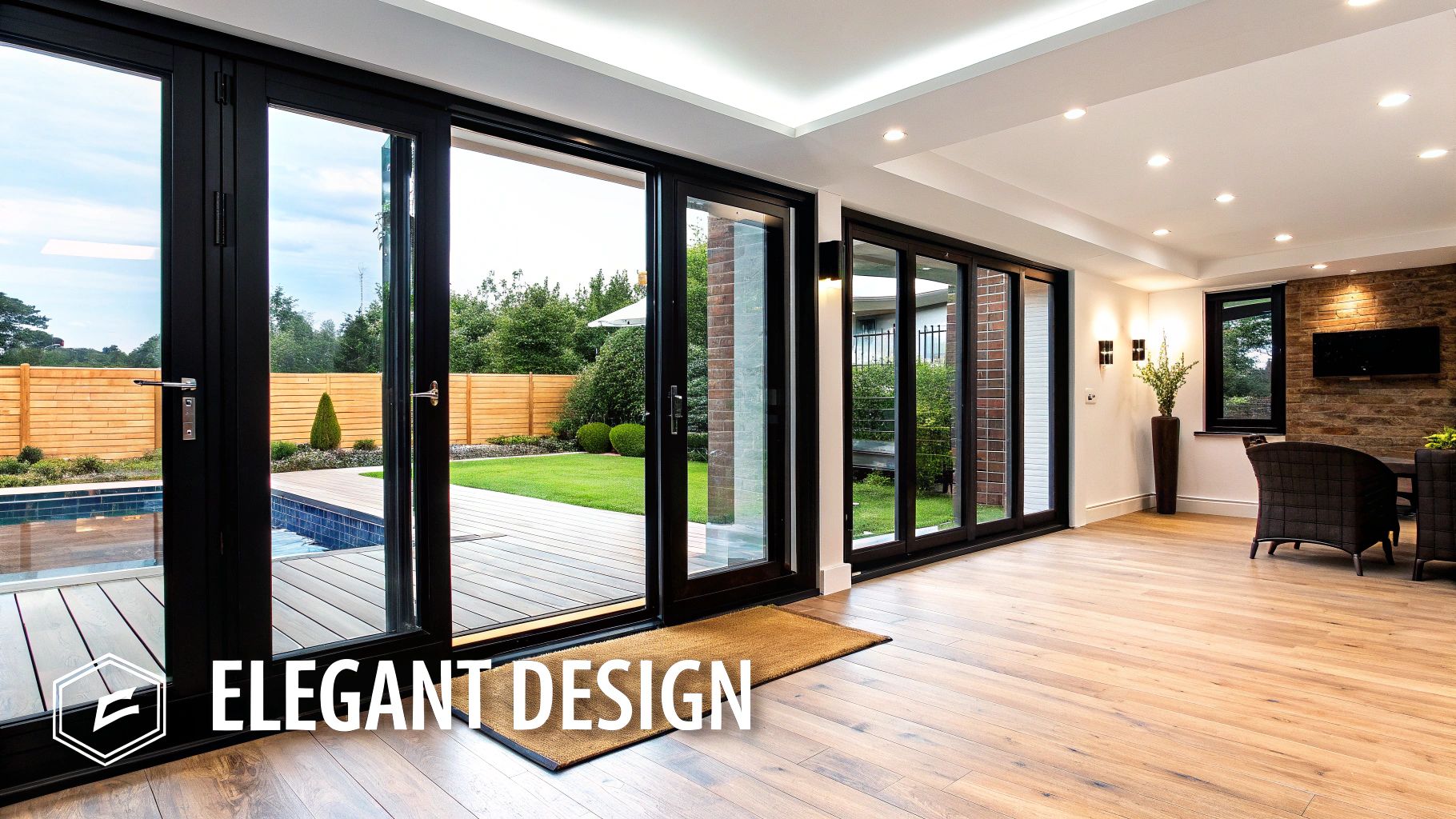
Getting quotes for folding patio doors is essential to the buying process. But simply comparing the final price can be deceiving. For a truly informed choice, carefully evaluate each quote to ensure you compare similar products and services. This means looking beyond the sticker price and understanding the details of each offer.
Deciphering the Details: Beyond the Bottom Line
A thorough quote should detail every project aspect, not just the total cost. This includes materials, labor, warranty, and any additional services. For instance, one quote might include removing your old patio doors, while another doesn't. This seemingly minor difference can significantly affect the overall cost.
Also, pay close attention to the materials listed. One contractor might quote standard double-pane glass, while another includes triple-pane, low-E glass. This quality difference impacts the price and the doors' long-term energy efficiency.
Warranty and Service: Protecting Your Investment
The warranty is a critical factor. A longer warranty often suggests higher quality materials and workmanship. Compare the length and coverage of each warranty, noting what's included and excluded. Some warranties cover only hardware, while others extend to the glass and frame.
Beyond the warranty, ask about service guarantees. What if there's an installation issue or the doors malfunction? A reputable company stands behind its work, offering dependable service and support. This gives peace of mind and protects your investment.
Hidden Costs: Unveiling Potential Surprises
Be wary of unusually low quotes. They may signal hidden costs that appear later. For example, a quote might exclude permit or disposal fees. These added expenses inflate the project cost, leading to unwelcome surprises.
Before accepting a quote, ask detailed questions. Are there extra charges for custom sizing or specific hardware finishes? Clarifying these upfront helps you accurately compare quotes and avoid exceeding your budget.
Negotiation Strategies: Getting the Best Value
Don't hesitate to negotiate. Multiple quotes give you leverage for the best possible price. Explain that you're comparing bids and seeking the best value.
But don't fixate solely on price. Be open to discussing value-added features or upgrades that enhance the project. This approach helps you secure the best deal without sacrificing essential features or performance.
Checklist for Comparing Quotes
Use this checklist for effective quote comparison:
- Materials: Are the materials comparable in quality and performance?
- Labor: Is the labor cost itemized, including estimated installation time?
- Warranty: What's the warranty's length and scope?
- Included Services: Are services like old door removal or disposal included?
- Hidden Costs: Are there potential hidden costs, such as permits or delivery?
- Service Guarantees: What post-installation service and support are offered?
By thoroughly evaluating each quote with this checklist, you’ll make a true apples-to-apples comparison. This empowers you to choose your folding patio doors confidently and get the best value.
Ready to transform your home with stunning folding patio doors? Explore Gladiator Window and Doors, your source for custom-made, thermally rated, and USA-approved doors at the lowest prices in the USA. Visit our website and experience the Gladiator difference!

















